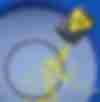Designation of an O-Ring, some technical concepts.

The O-Ring is designated by specifying the internal diameter (d1) and the diameter of the cross-section/cord (d2).
Let’s try to better understand together how we in ORINGONE take care of your requests starting from the Designation and technical measurements for the production of your Personalized O-Ring.
What does Designating an O-Ring mean?
The designation, or definition, of an O-Ring consists in identifying and expressing its two fundamental dimensions: internal diameter and cross-section of cord (or thickness).
In practical use, with large O-Rings, the development of the diameter is also used, specifying the length of the circumference.
It is very important to consider the size of the cord diameter d2 in the calculation, especially with diameters of the average-large cross-section.

The drawing shows the various diameters with the respective circumferences (or achievable developments) of the O-Ring:
- Internal diameter d1: internal circumference (or development) L1
- Average diameter dM: average circumference (or development) LM
- Outer diameter dE: outer circumference (or development) LE
The dimensions of the three diameters are different and, consequently, the dimensions of the developments are also different. It is therefore important to consider these differences and use the correct values when calculating the diameter or development.
Basic mathematics applied to O-Rings.
How is the average diameter of an O-Ring calculated?
The calculation to be performed to calculate the average diameter (dM) is: Development LM / π (Pi). In this way, the average diameter value of the O-Ring is obtained.
How is the internal diameter of an O-Ring calculated?
To obtain the internal diameter, simply subtract the diameter of the cord (d2) from the value obtained:
Inner diameter d1 = (development LM / π) – cord diameter d2
How is the development of the average diameter of an O-Ring calculated?
On the contrary, to obtain the value of the average diameter development (LM) the formula will be:
Development LM = (inner diameter d1 + cord diameter d2) x π
Instruments for the verification and quality control of an O-Ring.
The internal diameter d1 can be measured with different instruments:
- graduated conical gauges for dimensions up to about 500 mm
- diameter gauges (or circle gauges) for dimensions up to approx. 8,000 mm
- machines with optical vision instruments for dimensions up to 1,400 mm.
Our company uses measuring instruments equipped with high-resolution optics for measuring internal, external and cross-section diameters.
The innovative technology of these instruments allows the measurement of diameters up to 6,000 mm and cross-sections up to 20.00 mm, eliminating the effect of stretching and/or crushing of the cross-section that could cause distortions in the measurement of dimensions.
The diameter of the d2 cord can be measured (axially and radially) with different instruments:
- digital thickness gauges (with calibrated load)
- profile projectors
- machines with optical vision instruments
+PLUS+
When calculating the development (from diameter) or the diameter (from development) it is very important to take into account the different developments (internal, average, external) because you may find wrong measurements (especially with large diameter cord cross-sections).
Remember that the development of a stretched cord is the average one and when you create the O-Ring the inner part is compressed, reducing the diameter measurement while the outer part is stretched, increasing the diameter.
Although it is therefore very easy to calculate the internal diameter of an O-Ring, whether standard or large, you can always rely on the automatic calculation tool that you can find on this page in the "Customization section" of www.oringone.it.
And don’t forget the tolerances!
For more information and technical details, please contact us.













































